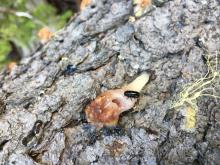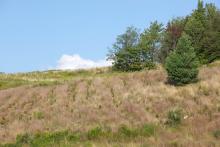Researchers with Michael Smith Labs have traced the fragrant scent of grapevine flowers to pollen grains stored in the anthers, contrary to common perception that petals alone produce perfume.
While studying grapes used to produce Cabernet Sauvignon from the Okanagan region of British Columbia, researchers from UBC's Wine Research Centre and Michael Smith Laboratories identified a gene that produces and regulates fragrance from the vines' tiny clusters of green blossoms.
"This was a surprise in fundamental plant biology," says Joerg Bohlmann, a Distinguished University Scholar and professor in the Michael Smith Laboratories who directed the study. "If you ask people where the perfume of a flower comes from, they'll likely say the female parts or the petals."
Details of the study are published in this week's Proceedings of the National Academy of Sciences Online Early Edition.
Scientists believe plants have evolved to produce perfume in order to attract specific types of pollinators while fending off herbivores and pathogens.
"This discovery gives us strong clues to the origin and evolution of fragrant flowers," says Bohlmann. While flowers such as roses and snapdragons rely on their petals to produce perfume and attract insects, few other species have been so closely studied.
"Cultivated grapevines are largely self-pollinated, so we believe the fragrance serves more as a defense mechanism to protect their male reproductive tissues from predatory insects," says Bohlmann, who adds that further studies on other flowering species may turn up similar mechanisms. "It may be more prevalent than we think."
The team also found that emission of perfume is light-dependent and is strongest at dawn, possibly to coincide with pollination and predation activities.
The study was supported by funding from Genome Canada, Genome B.C. and the Natural Sciences and Engineering Research Council of Canada.
Musqueam First Nation land acknowledegement
We honour xwməθkwəy̓ əm (Musqueam) on whose ancestral, unceded territory UBC Vancouver is situated. UBC Science is committed to building meaningful relationships with Indigenous peoples so we can advance Reconciliation and ensure traditional ways of knowing enrich our teaching and research.
Learn more: Musqueam First Nation
Faculty of Science
Office of the Dean, Earth Sciences Building2178–2207 Main Mall
Vancouver, BC Canada
V6T 1Z4


